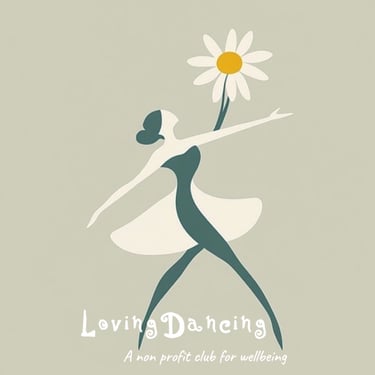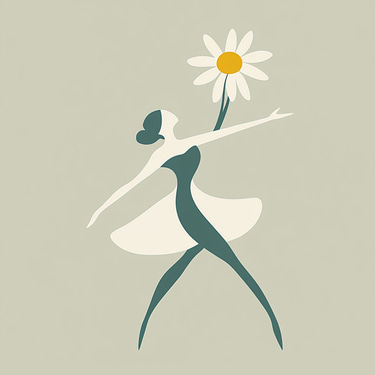Finding the Right Size for Ballet Slippers: A Comprehensive Guide
Too big, too small? how to choose if in between?
BALLET 101
Mrs. DL
10/24/20243 min read


Introduction to Choosing Ballet Slippers
Choosing the right size for ballet slippers is essential for any dancer, as it profoundly impacts comfort, performance, and overall enjoyment of the art. Whether you are a beginner or an experienced dancer, understanding how to select the correct size can prevent discomfort and potential injuries during practice and performances. This guide will explore the importance of proper sizing in ballet slippers and provide tips for finding the right fit.
Understanding the Importance of Fit
Ballet slippers are designed to enhance a dancer's movements, providing a close connection to the floor while allowing for flexibility and support. An ideal fit means the slippers hug the foot snugly without being overly tight. Poorly fitting shoes can lead to blisters, calluses, or even more severe foot issues over time. It is crucial to assess whether the slippers feel comfortable when standing, walking, or executing dance moves.
What to Do When the Right Size is Unavailable
If you find yourself unable to locate the right size for ballet slippers, consider going either larger or smaller but always with caution. If the fit feels slightly off, it's generally advisable to try a size up. This allows for any natural swelling of the feet during practice. However, if they are too loose, you may risk catching a heel while executing turns or jumps, which could lead to injuries.
Conversely, if a smaller size appears to be the only option, make sure they are not too constricting. A snug fit is important, but excessive pressure can lead to numbness and prevent proper blood circulation. Always prioritize comfort alongside performance needs.
Measuring Your Foot for the Perfect Fit
The first step in finding the right size for ballet slippers is to accurately measure your foot. Use a measuring tape to determine both the length and width of your foot. It’s beneficial to measure your feet at the end of the day when they tend to swell, providing a more accurate representation of their typical size.
Once you have your measurements, refer to the manufacturers' sizing charts. Different brands may have varying size standards, so always check their specific guidelines. It may also be helpful to visit a store where you can try on different styles and sizes to see what works best for your foot shape.
The advice on choosing the correct size for ballet flats is based on general guidelines shared by ballet professionals and shoe manufacturers rather than a specific scientific study. Ballet flats should provide support and flexibility without restricting movement or circulation. Here's why:
1. Foot Health: Properly fitting shoes are critical for preventing foot injuries. According to podiatric recommendations, shoes that are too small can cause blisters, bunions, and long-term issues like hammer toes or circulation problems . These issues can be exacerbated by the intense movements required in ballet.
2. Movement Flexibility: Ballet involves a high degree of foot articulation (such as pointing and flexing). Too-tight shoes can restrict these movements, limiting range and control, which is essential for technique and performance .
3. Professional Recommendations: Many ballet shoe brands and dance professionals suggest that if you're between sizes, it's better to go slightly larger and adjust for any extra space with toe pads or elastic adjustments . This allows for better comfort and flexibility.
Although this advice is not sourced from a specific scientific study, it's based on well-established knowledge from foot health experts and ballet shoe manufacturers. If you'd like more precise recommendations for your specific needs, consulting a podiatrist or professional ballet shoe fitter would be ideal.
Ballet flats should not be smaller than your feet. The right size should fit snugly without being too tight, allowing your toes to stretch comfortably and ensuring good balance and flexibility. If the shoes are too small, they may put pressure on your toes, affecting your performance and potentially leading to foot discomfort or injury over time.
As for wearing socks, ballet flats are typically worn barefoot to enhance the dancer's sensitivity to the floor, improving stability and control. Wearing socks can make your feet more slippery, especially on smooth surfaces, which can interfere with precise movements and safety. However, some dancers opt for special dance socks that are thin and non-slip, offering both sweat absorption and floor feel.
If you're concerned about sweating, you can choose breathable ballet flats or use some anti-slip powder to reduce the feeling of slipping caused by sweat. In any case, the key factors to consider are proper fit, comfort, and ensuring the shoes are non-slip.
DancingLoving - your non profit association for holistic wellbeing
mrs.dancingloving / Mrs. DL


Spotify: community music & podcast sharing
WhatsApp: open community
Instagram: mrs.dancingloving
LinkedIn & Facebook: stay tuned!
Newsletter: sign in in "contact"
